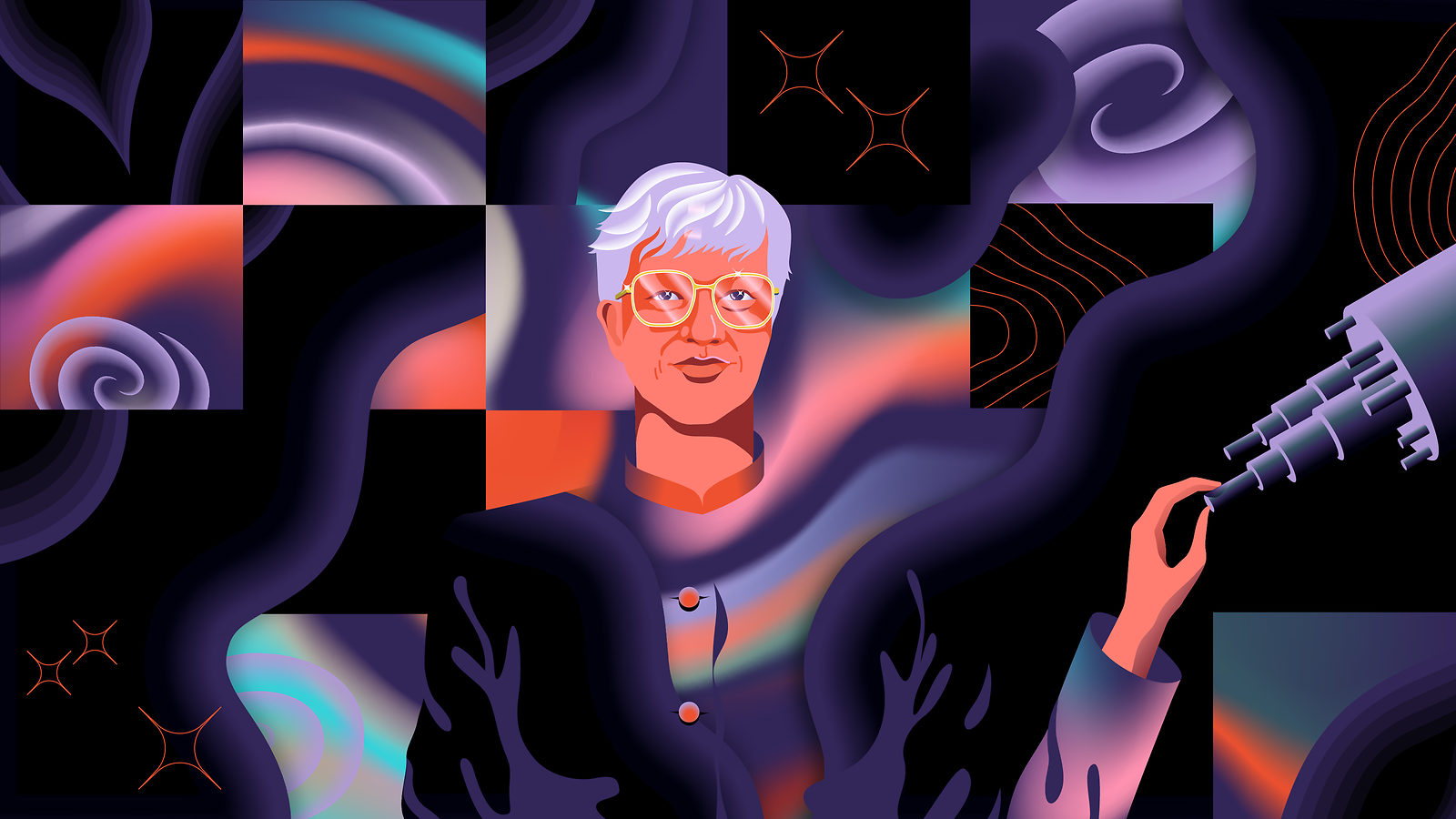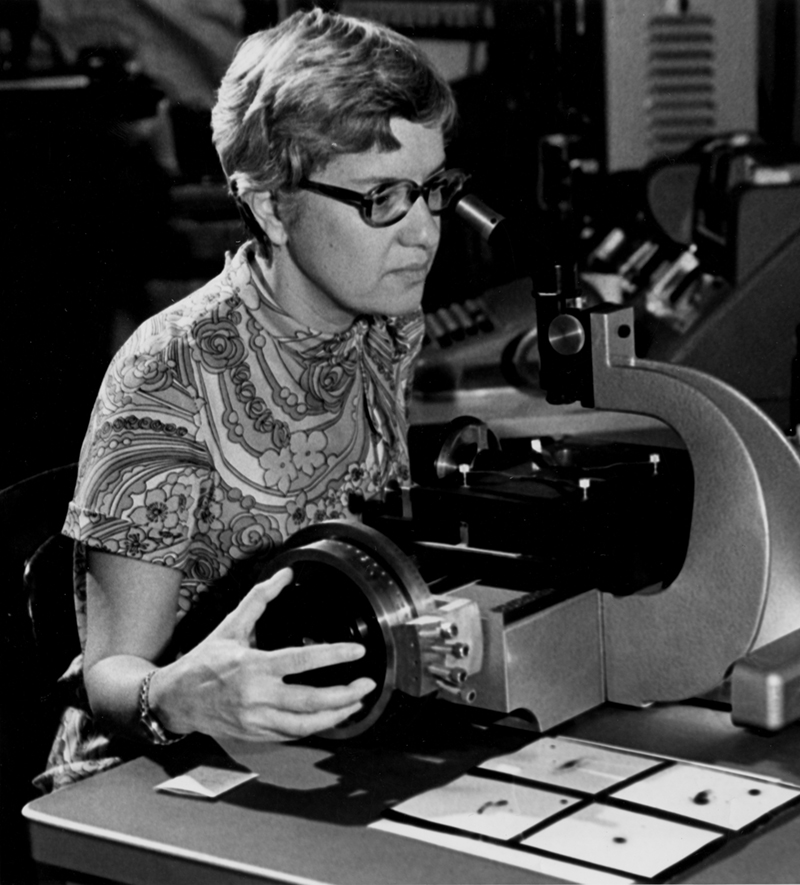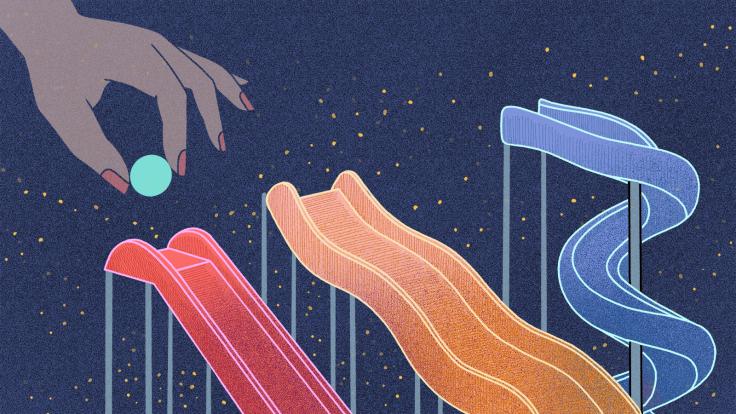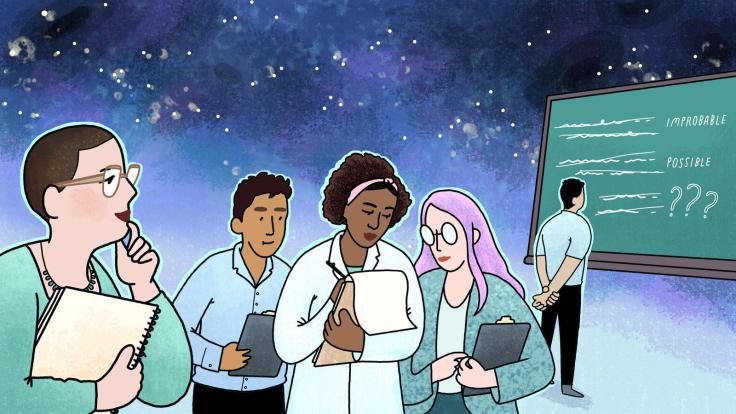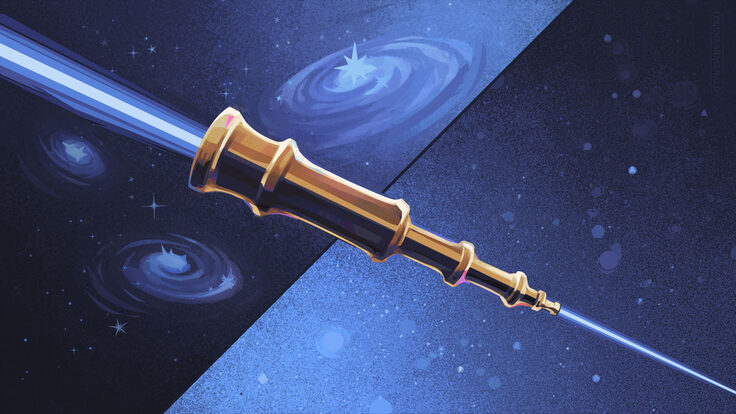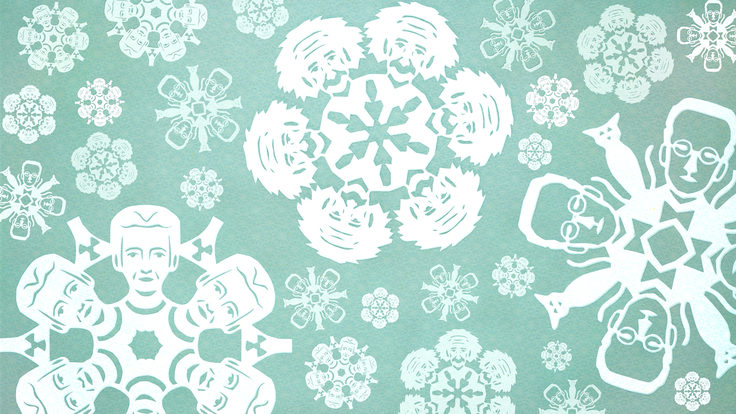The Large Synoptic Survey Telescope, a flagship astronomy and astrophysics project currently under construction on a mountaintop in Chile, will be named for astronomer Vera Rubin, a key figure in the history of the search for dark matter.
The LSST collaboration announced the new name at the 235th American Astronomical Society meeting in Honolulu on Monday evening, in conjunction with US funding agencies the Department of Energy and the National Science Foundation.
Scheduled to begin operation in late 2022, the Vera C. Rubin Observatory will undertake a decade-long survey of the sky using an 8.4-meter telescope and a 3200-megapixel camera to study, among other things, the invisible material Rubin is best known for bringing into the realm of accepted theory.
Rubin was a role model, a mentor, and a boundary-breaker fueled by a true love of science and the stars. “For me, doing astronomy is incredibly great fun,” she said in a 1989 interview with physicist and writer Alan Lightman. “It’s just an incredible joy to get up every morning and come to work and, in some much larger framework, not even really quite know what it is I’m going to be doing.”
Between the Lightman interview and “An Interesting Voyage,” a biography she wrote in 2010 for the Annual Review of Astronomy and Astrophysics, among other things, she left behind a detailed record of the story of her life.
A curious child
Rubin’s father, Pesach Kobchefski (later known as Philip Cooper), was born in Lithuania. Her mother, Rose Applebaum, was a second-generation American born to Bessarabian parents in Philadelphia. Rubin’s parents met at work at the Bell Telephone Company. They married and raised two children, Vera and her older sister, Ruth.
Rubin was born in 1928. She wrote that she remembered growing up “amid a cheery scatter of grandparents, aunts, uncles and cousins… largely shielded from the financial difficulties” of the Great Depression. Ruth and Vera shared a room, with Vera’s bed against a window with a clear view of the north sky. “Soon it was more interesting to watch the stars than to sleep,” Rubin wrote.
Her parents encouraged her curiosity. Her mother gave her written permission at an early age to check out books from the “12 and over” section of the library, and her father helped her build a (rather so-so) homemade telescope. “My parents were very, very supportive,” Rubin said in the interview with Lightman, “except that they didn’t like me to stay up all night.”
Rubin’s teachers were not universally as encouraging. Her high school physics teacher, she wrote, “did not know how to include the few young girls in the class, so he chose to ignore us.” Still, Rubin knew she wanted to go into astronomy. “I didn’t know a single astronomer,” she said, “but I just knew that was what I wanted to do.”
She did know about at least one female astronomer: Maria Mitchell, the first female professional astronomer in the United States. From 1865 to 1888, Mitchell taught at Vassar College in New York and served as director of Vassar College Observatory.
Looking to follow in her footsteps, Rubin applied to Vassar. She was accepted with a necessary scholarship. Rubin said that when she told the high school physics teacher about it, he replied, “‘As long as you stay away from science, you should be okay.’”
She graduated in three years as the only astronomy major in her class.
A family effort
Rubin spent summers in Washington, DC, working at the Naval Research Laboratory. The summer of 1947, her parents introduced her to Robert (Bob) Rubin. He was training to be an officer in the US Navy and studying chemistry at Cornell University.
The two married in 1948. She was 19 and he was 21. Vera had been accepted to Harvard University, which was well known for its astronomy department, but she decided to join her husband at Cornell instead.
Rubin completed her master’s thesis just before giving birth to her first child, and she gave a talk on her research at the 1950 meeting of the American Astronomical Society just after. Her adviser had said it made more sense for him to give the talk, as he was already a member of AAS and she would be a new mother, but Rubin insisted she would do it.
“We had no car,” Rubin wrote. “My parents drove from Washington, DC, to Ithaca, then crossed the snowy New York hills with Bob, me and their first grandchild, ‘thereby aging 20 years,’ my father later insisted.”
She gave a 10-minute talk on her study of the velocity distribution of the galaxies that at that time had published velocities. It solicited replies from several “angry-sounding men,” along with pioneering astronomer Martin Schwarzschild, who, Rubin wrote, kindly “said what you say to a young student: ‘This is very interesting, and when there are more data, we will know more.’”
For a few months after the experience, Rubin stayed home with her newborn son. But she couldn’t keep away from the science. “I would push David to the playground, sit him in the sandbox, and read the Astrophysical Journal,” Rubin wrote.
With her husband’s encouragement, she enrolled in the astronomy PhD program at Georgetown University. Her classes took place at night, twice per week. Those nights, between 1952 and 1954, Rubin’s mother babysat David (and, not long after, also her daughter, Judy) while Bob drove her to the observatory and waited to take her back home, eating his dinner in the car. In astronomy, “women generally required more luck and perseverance than men did,” Rubin wrote. “It helped to have supportive parents and a supportive husband.”
PhD and beyond
Theoretical physicist and cosmologist George Gamow—known for his contributions to developing the Big Bang theory, among other foundational work—heard about Rubin’s AAS talk and began asking her questions, Rubin wrote. One question—“Is there a scale length in the distribution of galaxies?”—so intrigued her that she decided to take it on for her thesis. Gamow served as her advisor.
Rubin wrote that when she sent her research to the Astrophysical Journal in 1954, then-editor and later Nobel Laureate Subrahmanyan Chandrasekhar rejected it, saying he wanted her to wait until his student finished his work on the same subject. She did not wait, publishing in the Proceedings of the National Academy of Sciences instead. (A later editor of Astrophysical Journal asked her to send him Chandrasekhar’s letter as proof, and she wrote, “I refused, telling him to look it up in his files.”)
In 1955, Georgetown offered Rubin a research position, which soon became a teaching position as well. She stayed there for 10 years.
In 1962, Rubin taught a graduate course in statistical astronomy with six students, five who worked for the US Naval Observatory and one who worked for NASA. “Due to their jobs, the students were experts in star catalogs,” Rubin wrote, “so I gave the students (plus me as a student) a research problem: Can we use cataloged stars to determine a rotation curve for stars distant from the center of our [g]alaxy?”
The group completed the paper, “some of it finished by seven of us working around my large kitchen table, long into the night,” Rubin wrote, and they submitted it to the Astrophysical Journal.
The editor called to say he would accept the paper but that he would not take the then-unusual step of publishing the names of the students, Rubin wrote. When Rubin replied that she would then withdraw the paper, however, he changed his mind.
Rubin wrote that she received many negative “and some very unpleasant” responses to the paper, but that it continued to be referenced every few years, even as she was writing in 2010. As she pointed out in her article, “[t]his was my first flat rotation curve”—a result she would see repeated in what would become her most famous publication.
During the 1963-1964 school year, Bob took a sabbatical so Vera could move the family to San Diego and work with married couple Margaret and Geoffrey Burbidge. With two other scientists, they had in 1957 published the seminal paper explaining how thermonuclear reactions in stars could transform a universe originally made up only of hydrogen, helium and lithium into one that could support life. With the Burbidges, Rubin traveled to both Kitt Peak National Observatory in Arizona and McDonald Observatory in Texas.
More than three decades later, in letter to Margaret Burbidge on her 80th birthday, Rubin described what the scientist had meant to her: “Did the words ‘role model’ and ‘mentor’ exist then? I think they did not. But for most of the women that followed you into astronomical careers, these were the roles you filled for us.”
What Rubin best remembers from when she first arrived in San Diego, she wrote, “was my elation because you took me seriously and were interested in what I had to say…
“From you we have learned that a woman too can rise to great heights as an astronomer, and that it’s all right to be charming, gracious, brilliant, and to be concerned for others as we make our way in the world of science.”
The view from Palomar
In 1964, Rubin and her family (which now included four children, between ages 4 and 13) returned home. Shortly thereafter, Vera and Bob took off again for the meeting of the International Astronomical Union in Hamburg. (“Fortunately, my parents enjoyed being with their grandchildren,” Rubin wrote.)
On the last evening of the conference, influential astronomer Allan Sandage, who in 1958 had published the first good estimate of the Hubble constant, asked Rubin if she were interested in observing on Palomar Mountain at the Carnegie Institution’s 200-inch telescope. It was a telescope, located on a mountain northeast of San Diego, that women had officially been prohibited from using (though it was a “known secret” that both Margaret and Geoffrey Burbidge had observed there together as postgraduate students). “Of course, I said yes,” Rubin wrote.
Rubin would be observing on the same mountain where, in 1933, astronomer Fritz Zwicky made a startling discovery. He noticed that the galaxies in the Coma Cluster were moving too quickly—so quickly that they should have broken apart. Judging by the mass of their visible matter, they should not have had the gravitational pull to hold together.
He concluded that the cluster must be more massive than it appeared, and that most of this mass must come from matter that could not be seen. The Swiss astronomer called the source of the missing mass dunkle Materie, or dark matter. He presented this idea to the Swiss Physical Society, but it did not catch on. (He made several other big splashes in astronomy, though.)
On Rubin’s first night at Palomar in December 1965, clouds prevented anyone from observing, so another observer took her on an unofficial tour of the facilities. The tour included the single available toilet, labeled “MEN.”
On Rubin’s next visit, “I drew a skirted woman and pasted her up on the door,” she wrote. The third time she came to observe, heating had been added to the observing room, along with a gender-neutral bathroom.
The world’s best spectrograph
In 1965, Rubin decided to prioritize observing over teaching. She asked her colleague Bernie Burke—famous for co-discovering the first detection of radio noise from another planet, Jupiter—for a job at the Carnegie Institution’s Department of Terrestrial Magnetism. Burke invited her to the DTM’s community lunch. And that’s where she met astronomer Kent Ford.
Working over the previous decade, Ford had pioneered the use of highly sensitive light detectors called photomultiplier tubes for astronomical observation. “Kent Ford had built a very exceptional spectrograph,” Rubin said. “He probably had the best spectrograph anywhere. He had a spectrograph that could do things that no other spectrographs could do.”
Rubin got the job at DTM, becoming the first female scientist on its staff. Using Ford’s spectrograph on the telescope at Lowell Observatory in Arizona, Ford and Rubin could observe objects that were not otherwise detectable. Among the astronomers who noticed was Jim Peebles, winner of the 2019 Nobel Prize for Physics.
By 1968, Rubin and Ford had published nine papers. “It was an exciting time,” Rubin wrote, “but I was not comfortable with the very rapid pace of the competition. Even very polite phone calls asking me which galaxies I was studying (so as not to overlap) made me uncomfortable.”
So she decided to go back to a subject she had previously dabbled in: the velocity of stars and regions of ionized hydrogen in M31, the Andromeda galaxy. “I decided to pick a problem that I could go observing and make headway on, hopefully a problem that people would be interested in, but not so interested [in] that anyone would bother me before I was done,” Rubin said.
Astronomers had been studying the spectra of light from Andromeda since at least January 1899, but no one had taken a look with an instrument as advanced as Ford’s.
One astronomer had gotten a better look than most, though. In the 1940s, astronomer Walter Baade had taken advantage of wartime blackout rules—meant to make it difficult for enemy planes to hit targets during World War II—to observe Andromeda from Mount Wilson Observatory northeast of Los Angeles. He resolved the stars at the center of the galaxy for the first time and identified 688 emission regions worthy of study.
Not knowing this, Rubin and Ford set out to do the same for themselves. They spent a frustrating night taking turns at the US Naval Observatory telescope in Arizona, huddled next to a small heater in negative 20 degree cold, before deciding they needed a new tactic.
On their way out in the morning, they ran into Naval Observatory Director Gerald Kron. “He took us into his warm office, opened a large cabinet and showed us copies of Baade’s many plates of stars in M31!” Rubin wrote. Rubin and Ford obtained copies of the images from the Carnegie Institute and went to work.
A rotation curveball
Rubin and Ford made their observations at Lowell Observatory and Kitt Peak. “On a typical clear night we would obtain four to five spectra,” Rubin wrote. “The surprises came very quickly.”
In our solar system, planets closest to the center are the fastest-moving, as they are most affected by the gravitational pull of the sun. Mercury, the closest, moves about 1.6 times as rapidly as Earth, whereas Neptune, the farthest, moves at less than 0.2 times Earth’s speed.
“The expectation was that galaxies behaved the same way, in that stars farthest from the massive center would be moving most slowly,” Rubin wrote.
But that’s not what they found. The rotation curves were flat, meaning that objects closer to the center of Andromeda were moving at the same speed as objects closer to the outskirts. “This was discovered over the course of about 4 ice cream cones that first night,” Rubin wrote, “as I alternated between developing the plates and eating (Kent would be starting the next observation).”
This time, Rubin said, people believed the data. “It just piled up too fast. Soon there were 20, then 40, then 60 rotation curves, and they were all flat… And it was just a joy to have that kind of a program, after a program where you had to go through deep analysis and everybody doubted the answer.”
But what did the flat rotation curves mean? The popularly accepted answer is that the way the galaxies in Andromeda move is influenced by dark matter.
If a galaxy is formed in the center of a disk of invisible dark matter, the gravitational pull of the dark matter will affect how quickly each of its parts moves, flattening the rotation curves.
Theorists Peebles, Jeremiah P. Ostriker, Amos Yahil and others had predicted the existence of dark matter independent of Rubin and Ford’s findings, Rubin said. “The ideas had been around for a while… But the observations fit in so well, [since] there was already a framework, so some people embraced the observations very enthusiastically.”
Rubin was agnostic about the idea of dark matter and wrote that she would be delighted if the explanation actually came in the form of a new understanding of how gravity works on the cosmic scale. “One needs to keep an open mind in seeking solutions,” she wrote.
A scientific legacy
Rubin continued her work, receiving recognition for her contributions in various ways.
From 1972 to 1977 she served as associate editor of the Astronomical Journal, and from 1977 to 1982 she served as associate editor of Astrophysical Journal Letters. In 1993, she received the National Medal of Science from President Bill Clinton. In 1994 she received the Dickson Prize in Science from Carnegie-Mellon University and the Henry Norris Russell Lectureship from the American Astronomical Society. In 1996 she became the second woman to receive the Gold Medal of the Royal Astronomical Society in London (168 years after the first, Caroline Herschel in 1828). In 1996 President Clinton nominated her to provide input to Congress as a member of the National Science Board for a term of six years.
In 1997 she and a few other members of the board were invited to visit the McMurdo research station at the South Pole. Rubin wrote that she was asked if she would spend her time at McMurdo with the astronomers. “With a little embarrassment, I asked if that meant that I would miss everything else, the penguins, the mountains and all the other events,” she wrote. “Without much difficulty, I voted for the penguins.”
In 2004 the National Academy of Sciences awarded Rubin the James Craig Watson Medal for “her seminal observations of dark matter in galaxies… and for generous mentoring of young astronomers, men and women.”
Rubin made it a priority to listen to and encourage students and up-and-coming astronomers, and she was especially interested in improving the chances for women in science.
Asked by Lightman, “Do you think that your experience in science has been different because you are a woman rather than a man?” she replied, “Of course. Yes, of course. But I’m the wrong person to ask that question. The tragedy in that question is all the women who would have liked to have become astronomers and didn’t.”
Rubin shared her love of astronomy far and wide. “We are fortunate to live in an era when it is possible to learn so much about the [u]niverse,” she wrote. “But I envy our children, our grandchildren, and their children. They will know more than any of us do now, and they may even be able to travel there!”
All four of the Rubin children have gone into science.
Her son Allan, quoted in the 2010 article, remembered his parents often spent evenings “with their work spread out along the very long dining room table, which wasn’t used for eating unless a lot of company was expected,” he said. “At some point I grew old enough to realize that if what they really wanted to do after dinner was the same thing they did all day at work, then they must have pretty good jobs.”
Rubin’s daughter followed Vera into the field of astronomy, initially hooked by a lesson her mother taught on black holes. Over several decades, Judy collaborated on numerous publications and attended meetings around the world with her mom.
Rubin died in 2016 at the age of 88. Her name lives on in the AAS Vera Rubin Early Career Prize, Vera Rubin Ridge on the planet Mars, Asteroid 5726 Rubin and, now, the Vera C. Rubin Observatory on Cerro Pachón.



